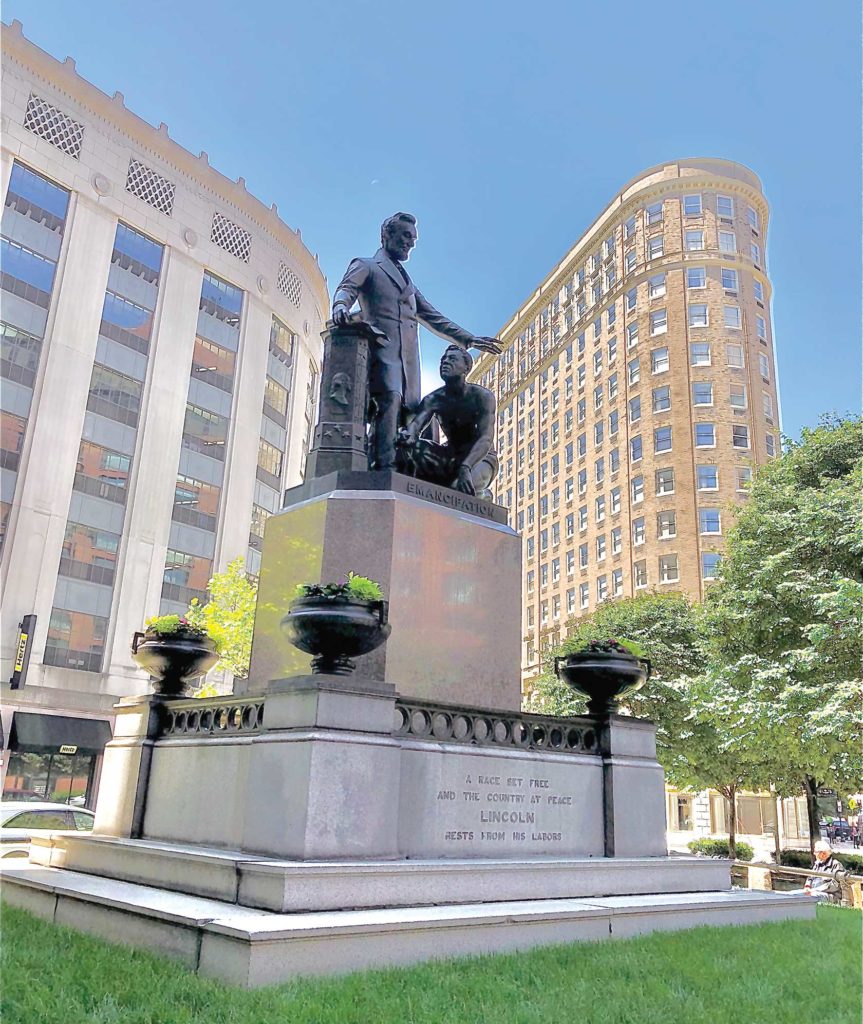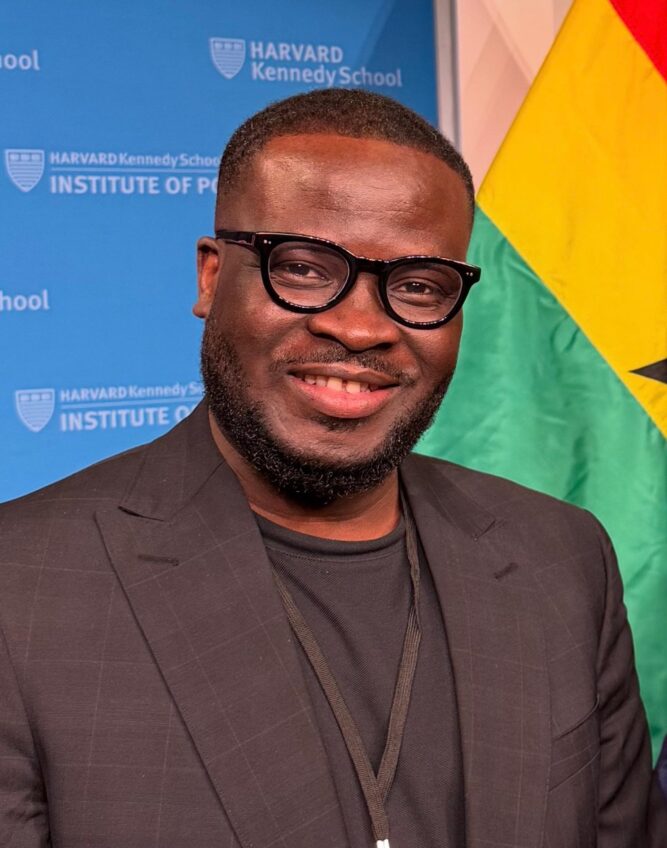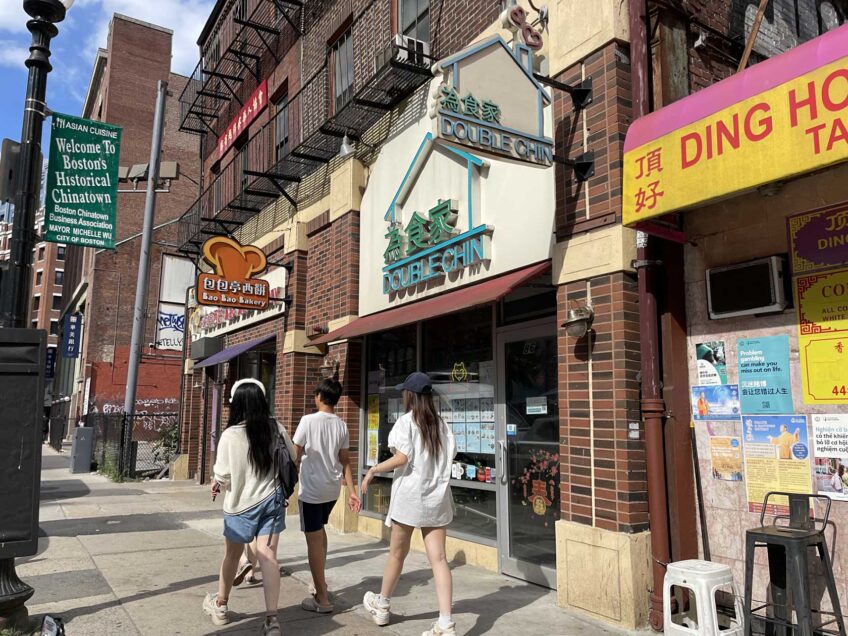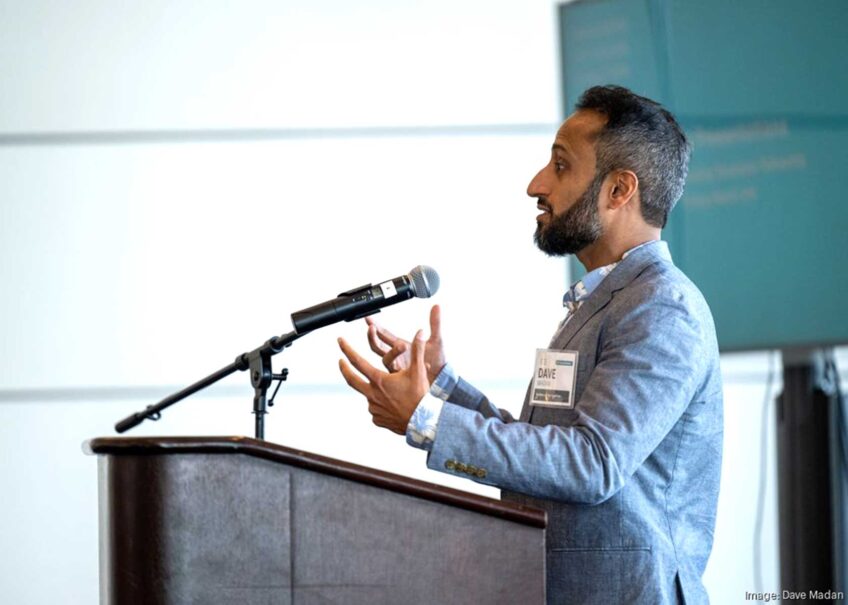
The Boston Art Commission voted unanimously Tuesday night to remove from Park Square a statue that represents Abraham Lincoln freeing the slaves.
The decision came at the end of a second hearing to collect opinions on the memorial after a petition for its removal gathered more than 12,000 signatures in less than a month. Tory Bullock, a local Black actor and artist, launched the signature drive.
Known as the “Lincoln statue,” the Emancipation Group memorial in Park Square is a replica of the one in Washington, D.C. The piece, designed by Massachusetts sculptor Thomas Ball, depicts President Abraham Lincoln and a slave with broken shackles.
Lincoln, with one hand clutching the Emancipation Proclamation and the other outstretched, stands upright and towers above the Black slave who kneels before him in a loin cloth. Archer Alexander, once enslaved, served as model. An inscription on the front of the piece reads, “A race set free/ and the country at peace / Lincoln / Rests from his labors.”
In a statement, Mayor Marty Walsh expressed support for the commission’s decision.
“As we continue our work to make Boston a more equitable and just city, it’s important that we look at the stories being told by the public art in all of our neighborhoods,” Walsh said. “After engaging in a public process, it’s clear that residents and visitors to Boston have been uncomfortable with this statue, and its reductive representation of the Black man’s role in the abolitionist movement.”
Commissioners said they were persuaded by public comments that called for a more dignified depiction of Black people embracing freedom.
Robert Freeman, a Black painter who is a commissioner, said he changed his stance from adding context to removing the statue after hearing of children who passed by it and saw themselves represented.
“I realized that changing the inscription is not going to change the visual power of what art does,” he said.
Ekua Holmes, a Black visual artist who is vice chair of the commission, agreed that public pieces of art “strike the heart and mind” viscerally.
“I think the body language overwhelms any possible text that might accompany this piece,” she said. “I can’t imagine any other story of emancipation being told in this way.”
Holmes added that the kneeling Black man is “frozen in a space where he may be technically emancipated, but he has not yet become a full citizen. He is not yet equal. He is not standing tall in the fullness of emancipation.”
The decision coincides with America’s moment of racial reckoning, which has expanded beyond racism and law enforcement into the realm of long-standing public memorials and the ideas they convey.
Critics say what they see as the Black man’s submissive posture runs contrary to the ideals of dignity and freedom.
About half of the 32 who testified Tuesday night’s virtual meeting agreed.
“It just doesn’t feel right, it doesn’t look right and it isn’t right,” Jumaada Smith of Roxbury said.
Bullock said that while he respected the artistry, history and longevity of the piece, the statue “feeds into a narrative that black people need to be led and freed,” he said.
“We cannot say that racism is a public health crisis on one hand and admit that we see racism as a public health crisis, but at the same time say that we do not see what the problem with this statue is,” he said.
Supporters of leaving the statue in place pointed to the freed slaves and Civil War veterans who raised money to pay for the original memorial in Washington. Those donors were not involved in the design, however.
“I don’t agree with removing the statue at all,” said Kristen Perella, pointing to the freed Black people’s contributions.
Perella, who said she was descended from Mayflower pilgrims and union soldiers in the Civil War, said she has walked by the statue many times and “never saw this as a white savior or other white supremacist depiction, but as its original depiction of freedom and emancipation.”
Local historian and former state representative Byron Rushing testified in favor of preserving the statue.
“Public art, as you know, when it is erected to commemorate a person or an event is designed with the assumption that no one at the time and no one in future generations will not know why it got put up in the first place,” said Rushing, who is Black. “I ask the commission, regardless of what it decides about the physical placement of the statue to decide immediately to maintain its public interpretation.”
Besides removing the statue, the commission proposed a public event to help educate the community about it in a new, publicly accessible setting.
Commission staff said that it could cost as much as $15,000 to hire a conservator to begin removing the memorial and $300 to $400 a month for temporary storage while a new site for the piece is found.
When the statue will be taken down has not been determined.
In Washington, Eleanor Holmes Norton, the city’s delegate to Congress, has vowed to introduce legislation to remove the original statue from its perch in the city’s Capitol Hill neighborhood. It faces a statue in the same neighborhood park of Mary McLeod Bethune, the Black educator and women’s leader.
Saraya Wintersmith covers Dorchester, Roxbury and. Mattapan for WGBH News 89.7.






